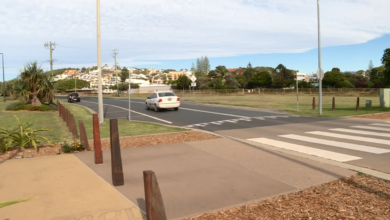GAV’S WEATHER UPDATE: AUTUMN POLAR BLASTS

Overall things are looking good unless you are in South East Queensland and Northern Rivers with rain set to return, particularly on Saturday.
We’ve had this big classic low pressure system move out into the Tasman and a lovely pulse of cold polar air that came through, and we are just wedged in between quite a lot of high cloud. There are masses of cloud over Queensland.
Newcastle and the Hunter might see some cloud during Friday but it should move through quite quickly.
Friday is looking very nice.
But there is another big trough, another big burst of tropical moisture causing extensive falls right across the QLD coast.
It will then move off shore during Sunday producing a bit of a low and that means more swell for surfers.
GAV’S BLOG: AUTUMN POLAR BLASTS
The Anzac Day dawn service in Sydney was the coldest in 52 years for Sydney and one of the coldest on record for many areas across the broadcast region, including the Hunter Valley, New England and North West.

It was all thanks to a blast of cold, dry polar air, typical for this time of year. Farmers have always used Anzac Day as the turning point focusing their energy towards Winter crops.
As the monsoon trough moves north towards the equator we start to see a greater influence from the South Pole. It is one of the aspects of living in the mid latitudes. We can be heavily influenced by the tropics as we’ve witnessed over the past two Summers which became more like our wet season due to the La Nina but we can also be influenced by the cold, polar winds.
A large high pressure sits over the South Pole and spiralling around that high is an area known as the roaring 40s. There is very little friction in these latitudes as there is no land to slow the fast moving winds travelling from west to east. This is where deep powerful lows love to form which then develop long arms like tentacles that stretch out from the centre of the low spinning around. These extended, bursts of cold air can fly off these systems in the form of upper level cold pools. They like to move in across the Great Australian Bight and over the SE corner of the country. By the time that air reaches us it is very dry and produces those classic blue sky days. This is exactly what happened on Anzac Day making it a beautiful but icy cold dawn service. 
The upper level cold pools then form surface lows that start to spin especially once they get away from the friction of land. Warm sea surface temperatures in the Tasman can deliver more energy to these storms forming East Coast Lows. Surfers love them because they create big waves, skiers love them because they deliver fresh snow to the ski resorts and once they pass the cold dry air is perfect for making man made snow. Farmers don’t like them because they cause frosts ruining Winter crops.
So as always as a weather presenter you have to be conscious of your audience because in simple terms some people love rain while others hate it and it is the same with every other form of weather.
Thanks to Jodie Sanders for the first sunrise shot taken at Terrigal and Kurt Fearnley for the other, taken at the Nobbys dawn service in Newcastle.
Upload your weather shots at www.nbnweathershots.com.au.




